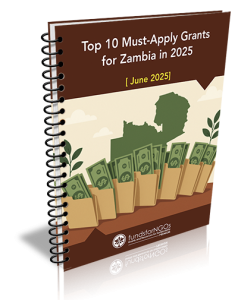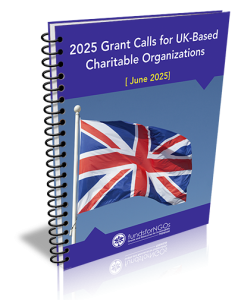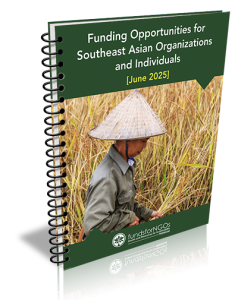Deadline: 27-Mar-23
The Centers for Disease Control (CGH) is accepting proposals for Enhancing Comprehensive Community-Based and Sustainable HIV/AIDS Key Population (KP) Prevention Services and Treatment Support for KP Living with HIV in the Republic of Zambia under the President’s Emergency Plan for AIDS Relief (PEPFAR).
This NOFO will support Zambia to achieve and sustain gains made in HIV epidemic control by supporting KP to access health services. KP, as defined by UNAIDS, includes 5 main groups gay men and other men who have sex with men (MSM), sex workers, transgender people, people who inject drugs (PWID), and prisoners and other incarcerated people. These groups are particularly vulnerable to HIV and frequently lack adequate access to services. The NOFO aims to improve HIV-related outcomes for KP by engaging KP-led and competent organizations to provide critical HIV prevention interventions. The successful recipient will provide direct service delivery for comprehensive, quality, and integrated, person-centered HIV prevention services starting in Lusaka Province. The broad areas of support include, but are not limited to:
- HIV prevention services for KP including:
- Case finding with effective
- Linkage of positive KP to facility and community-based treatment services, ensuring they are retained in care and supported to achieve sustained viral load suppression (VLS)
- Linkage of HIV negative KP to biomedical HIV prevention services such as:
- Pre-exposure prophylaxis (PrEP)
- Voluntary Medical Male Circumcision (VMMC)
- Cervical cancer prevention and treatment
- Condom programming
- Gender-based violence prevention and response (GBV)
- Harm reduction services for PWID.
- Case finding with effective
Goals and Priorities
- Goals and priorities include the following:
- Reducing the prevention and treatment gaps for adolescent girls and young women (AGYW), children, and key populations (KP);
- Strengthening national and local programmatic, financial, and community leadership;
- Designing new partnerships with key private, public, and multi sector entities that can complement existing programs and expand reach;
- Utilizing the PEPFAR platform for broader disease surveillance and public health programming, consistent with the PEPFAR legislative and funding authority;
- Investing in the scale-up of cutting edge behavioral, and implementation science to bend the curve on new infections;
- Improving the care and treatment of HIV/AIDS, sexually transmitted infections (STIs), and related opportunistic infections by improving STI management; enhancing laboratory diagnostic capacity and the care and treatment of opportunistic infections; interventions for intercurrent diseases impacting HIV infected patients including tuberculosis (TB); and initiating programs to provide anti-retroviral therapy (ART);
- Strengthening the capacity of countries to collect, use, and share surveillance data and manage national HIV/AIDS programs by expanding HIV/STI/TB surveillance programs and strengthening laboratory support for surveillance, diagnosis, treatment, disease monitoring, and HIV screening for blood safety; and
- Developing, validating, and/or evaluating public health programs to inform, improve, and target appropriate interventions, as related to the prevention, care and treatment of HIV/AIDS, TB, and opportunistic infections.
- In an effort to ensure maximum cost efficiencies and program effectiveness, HHS/CDC also supports coordination with and among relevant partners. Recipient may be requested to participate in the following programmatic activities:
- Scale-up evidence-based programs to identify and close the major HIV gaps among AGYW, children, and key populations;
- Increase impact through strategic coordination and integration;
- Strengthen and leverage key multilateral organizations, global health partnerships, and private sector engagement;
- Encourage country ownership and invest in country-led plans, putting our national and local partners in the lead and actively enabling their growth through design of the program at all phases;
- Build sustainability through investments in health systems;
- Enhance health equity and reduce disparities in access to and uptake of HIV services;
- Improve performance metrics, monitoring and evaluation and the quality of related data; and
- Promote research, development, and innovation to develop a body of knowledge, enhance awareness and increase the skills and abilities of stakeholders (research is not supported by this NOFO).
Funding Information
- Average One Year Award Amount: $900,000
- Total Period of Performance Length: 5 year(s)
- Estimated Award Date: September 30, 2023
Outcomes
- CDC may require or allow applicants to propose additional related project period outcomes other than those identified in the NOFO.
- Short-Term Outcomes:
- Increased knowledge about HIV status, prevention, linkage, treatment, and care services among KPs
- Increased community engagement of law enforcement agents, policy makers, and other stakeholders
- Increased awareness of the negative effects of stigma and discrimination
- Increased awareness, acceptability, and demand for biomedical services (PrEP, VMMC, PEP), HIV testing services (HTS), condoms etc. for KP
- Improved targeted testing of KP through optimization of HIV testing modalities
- Improved effective referral/linkage to treatment and harm reduction services
- Intermediate Outcomes:
- Reduced risky sexual and injection behaviors
- Increased uptake of biomedical interventions
- Increased uptake of MAT
- Improved delivery of non-judgmental and respectful HIV services for KP by healthcare service providers
- Improved retention on ART
- Improved viral suppression rates
- Improved VLC
- Improved adherence and retention to treatment by KP
- Long-Term Outcomes:
- Reduced stigma and discrimination towards KP
- Reduced HIV morbidity and mortality among KP
- Enhanced sustainable, appropriate, and non-discriminatory HIV service delivery for KP
- Short-Term Outcomes:
Strategies and Activities
- Strategy 1: Develop and implement evidence-based innovations to facilitate the uptake of and retention on HIV prevention interventions for KP
- Provide information, education, and communication around HIV risk reduction behaviors and availability of HIV services including HIV testing, PrEP, VMMC, PEP, condom and lubricant use and distribution, STI/TB screening, etc.
- Engage key community stakeholders such as law enforcement, traditional and faith-based leaders and policy makers to address knowledge, social norms and attitudes that drive stigma and discrimination towards KP
- Develop and implement community mobilization and outreaches to promote, increase demand, and uptake of biomedical services and HIV risk reduction practices
- Develop effective referral systems to link PWID to harm reduction interventions including needle and syringe programs and MAT
- Strategy 2: Develop and implement effective strategies for case-finding, linkage to ART, and treatment support to improve retention and viral suppression of among KPs on ART
- Train community health workers per targeted catchment area on the optimal implementation of social network strategy, safe and ethical index case testing, and HIV self-testing approaches for case finding among KPs, their sexual partners, and their biological children
- Link key populations living with HIV (KPLHIV) to HIV treatment
- Link KPs who test HIV-negative to PrEP
- Develop or adopt effective community approaches to engage community stakeholders and policy makers to improve attitudes towards KP
- Provide KP service competency training for health care providers in government health facilities
- Develop or adopt effective community approaches to track and support KPLHIV on treatment to achieve VLS
- Develop or adopt effective mental health approaches to support adherence among KPs on ART
- Develop and update data collection and reporting tools for HIV testing modalities, including index testing
- Implement continuous quality improvement initiatives across the clinical cascade
Target Populations
- Target populations for this NOFO will include those who are most vulnerable to HIV infections, including sex workers, MSM, PWID, and transgender individuals, as described in the NOFO. Recipient will be expected to target these KP while continuing to uphold established principles of person-centered approaches (i.e., collaborative partnerships) that do no harm, but respect client confidentiality, safety, and rights.
Eligibility Criteria
- Eligible Applicants
- Unrestricted
- Government Organizations:
- State governments or their bona fide agents (includes the District of Columbia)
- Local governments or their bona fide agents
- Territorial governments or their bona fide agents in the Commonwealth of Puerto Rico, the Virgin Islands, the Commonwealth of the Northern Marianna Islands, American Samoa, Guam, the Federated States of Micronesia, the Republic of the Marshall Islands, and the Republic of Palau
- State controlled institutions of higher education
- American Indian or Alaska Native tribal governments (federally recognized or state-recognized)
- Non-government Organizations
- American Indian or Alaska native tribally designated organizations
- Other
- Ministries of Health
- Additional Information on Eligibility
- This is a fully competitive NOFO and eligibility is unrestricted, meaning any and all types of organizations and entities are eligible to apply.
- In addition, as may be required by host country laws, applicant is expected to comply with and document that it has satisfied all regulatory requirements of their governing entities that could otherwise compromise the integrity and resources provided by this program or make the conduct of expected activities under this award unable to be performed. Applicants must also meet the criteria established in CDC’s pre-award risk assessment to be eligible to receive funds under this NOFO.
For more information, visit Grants.gov.









































